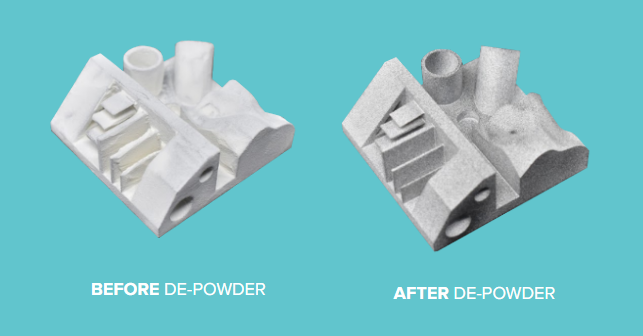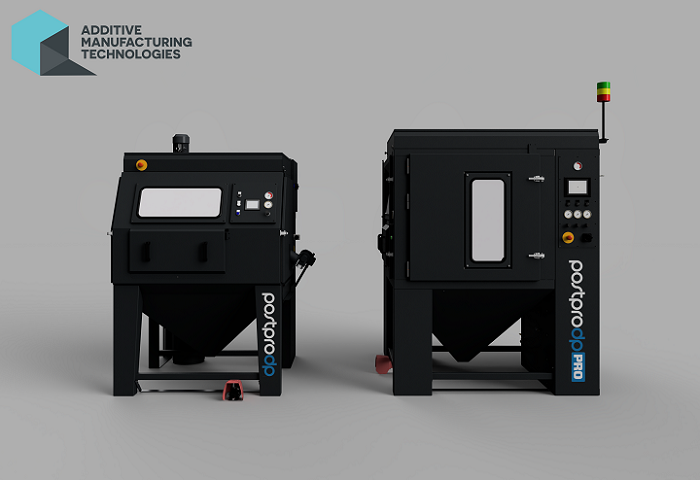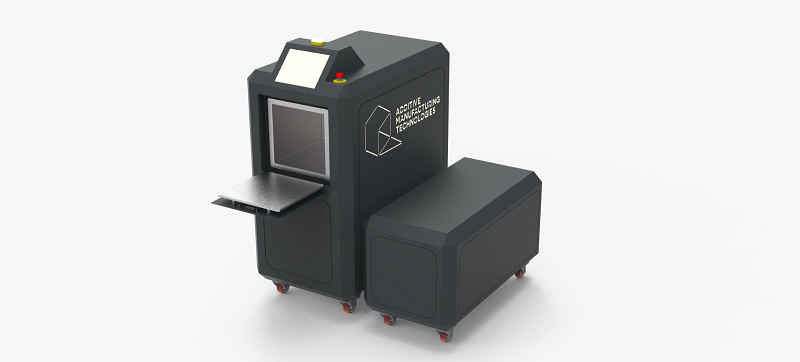AMT & Leering Hengelo: PostProDP Range of Automated Depowdering Systems for 3D Printing
In 2017, UK-based Additive Manufacturing Technologies Ltd (AMT) first introduced its automated AM post-processing solution, PostPro3D, to the industry, and officially released the system a year later. Following up with the smaller PostPro3D Mini and the medical-grade PostPro3D Pro, the growing company is now partnering with blasting equipment producer Leering Hengelo to launch two new automated depowdering systems for 3D printing – the PostProDP and the PostProDP Pro.
AMT’s safe, sustainable, and fully automated post-processing solutions allow for industrial production of 3D printed parts at scale. The patent-pending PostPro3D technology is based on the company’s proprietary BLAST process (Boundary Layer Automated Smoothing Technology), and helps decrease manufacturing and operation costs and lead time. This is a big deal, since up to 60% of the manufacturing costs for 3D printed parts come from lengthy manual post-processing and depowdering methods.
The new PostProDP range was designed especially for the 3D printing industry, and is AM material-agnostic, so it works with all powder-based 3D printing, such as EOS, HP, and 3D Systems, and several thermoplastic polymers, like elastomeric materials and polyamides. The two depowdering machines are CE and ATEX certified, ensuring what AMT refers to as “a standalone high throughput industrial de-powdering solution.”
“AMT’s vision is to develop fully automated safe and sustainable post-processing solutions to enable the industrial production of additively manufactured parts at scale. We first achieved this with the successful commercialization of the PostPro3D vapor smoothing system. De-powdering is the next key bottleneck in the post processing chain, and PostProDP goes a long way to mitigate many of the current issues with cleaning AM parts,” stated AMT’s CEO Joseph Crabtree in a press release. “We are delighted to be partnering with industry experts Leering on this industry critical mission.”
Dutch company Leering makes blasting equipment, such as blast cabinets, abrasives, and mobile blastrooms and blastunits, for the metal and plastics processing industry.
“Leering are experts in surface finishing with 80 years of experience in machine design and production for surface treatment. We export our machines, branded Normfinish, worldwide,” said André Gaalman, the CEO of Leering. “The partnership with AMT will allow us to strengthen each other’s positions in additive manufacturing and offer our joint customers globally the best solution for their post-processing needs. We’re excited to offer our customers each other’s solutions and bring a next generation of post-processing solutions to the market.”
The unique plug and play PostProDP systems come with a PLC controller that’s pre-loaded with recipes for common material combinations, and include a removable, adjustable tumble basket inside for optimized part cleaning. The basket also helps decrease the amount of fine particulate powder leakage after processing, and ionizing nozzles ensure that the parts are totally powder-free after blasting.
The range complements AMT’s current range of PostPro3D vapor smoothing systems, and the overall design configuration of the PostProDP machines make the user experience safer and more efficient. Both the PostProDP and PostProDP Pro take just ten minutes to remove the powder without damaging your 3D printed parts, and can be run with multiple medias, including steel balls. The compact PostProDP features two large entrance doors with safety sensors, splash glass, and automatic filter cleaning cartridge filters, while the PostProDP Pro has a removable nozzle holder and the option for manual blasting through a side door. Both come with a 12-month warranty.
The PostProDP range has been tested with customers across the US and Europe, and are now available to order from AMT.
The post AMT & Leering Hengelo: PostProDP Range of Automated Depowdering Systems for 3D Printing appeared first on 3DPrint.com | The Voice of 3D Printing / Additive Manufacturing.
Additive Manufacturing Technologies unveils integrated post-processing Digital Manufacturing System at Formnext 2019
Additive Manufacturing Technologies reveals plans for global expansion
Additive Manufacturing Technologies raises $5.2 million for 3D printing post-processing technology
3D Printing News Briefs: October 10, 2019
We’re talking about events and business today in 3D Printing News Briefs. In November, Cincinnati Inc. is presenting at FABTECH, and Additive Manufacturing Technologies and XJet are heading off to formnext. Moving on, Thor3D has announced a new partnership with Rhinoceros.
Cincinnati Incorporated Showing at FABTECH
 Machine tool manufacturer Cincinnati Incorporated (CI) is going to FABTECH 2019 next month in Chicago, and plans on showcasing its recently announced partnership with Hendrick Motorsports, along with the #88 car driven by Alex Bowman, and its latest machines at the event. CI is now a full-season associate sponsor of the team’s four-car stable for the next ten years, in addition to its Official Metal Fabrication and Additive Equipment Provider. The racecar will be in booth #A2973 at the show, along with CI’s Hyform and AFX press brakes, Roboform cell, and new CLX laser, which was built specifically for automation-minded metal fabricators. The company’s high temperature Small Area Additive Manufacturing (SAAM HT) machine will be on display in booth #A3839, and its Medium Area Additive Manufacturing (MAAM) machine will make its official debut to the public.
Machine tool manufacturer Cincinnati Incorporated (CI) is going to FABTECH 2019 next month in Chicago, and plans on showcasing its recently announced partnership with Hendrick Motorsports, along with the #88 car driven by Alex Bowman, and its latest machines at the event. CI is now a full-season associate sponsor of the team’s four-car stable for the next ten years, in addition to its Official Metal Fabrication and Additive Equipment Provider. The racecar will be in booth #A2973 at the show, along with CI’s Hyform and AFX press brakes, Roboform cell, and new CLX laser, which was built specifically for automation-minded metal fabricators. The company’s high temperature Small Area Additive Manufacturing (SAAM HT) machine will be on display in booth #A3839, and its Medium Area Additive Manufacturing (MAAM) machine will make its official debut to the public.
“We’re ready to get to FABTECH and show the fabricating world what we’ve been up to in the past year. Walking through our facility, you can feel the energy and see the production happening. It’s exciting and it’s contagious, and we can’t wait to share it,” said Matt Garbarino, Director of Marketing Communications at Cincinnati Incorporated.
XJet Bringing Extended Carmel Product Line to formnext
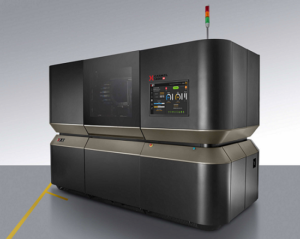 FABTECH isn’t the only show in November – formnext is taking place in Frankfurt from November 19-22, and XJet announced that it will be introducing two new versions of its Carmel 1400 3D printer at the event. The Carmel 1400M for metals and the Carmel 1400C for ceramics, both of which use XJet’s NanoParticle Jetting technology, are part of the company’s continuing work to, as XJet put it, “redefine metal and ceramic AM.”
FABTECH isn’t the only show in November – formnext is taking place in Frankfurt from November 19-22, and XJet announced that it will be introducing two new versions of its Carmel 1400 3D printer at the event. The Carmel 1400M for metals and the Carmel 1400C for ceramics, both of which use XJet’s NanoParticle Jetting technology, are part of the company’s continuing work to, as XJet put it, “redefine metal and ceramic AM.”
“Formnext is always a highpoint on XJet’s calendar. Each year we hit new milestones, and this is particularly evident at Formnext. From Formnext, XJet will offer two systems, the Carmel 1400C devoted to ceramics and the Carmel 1400M dedicated to metals. While both systems use the same NanoParticle Jetting technology, they are different and have been optimized to handle the different materials. Both will be demonstrated on our booth throughout the show,” said XJet’s CBO Dror Danai.
At Booth C01 in Hall 12.1 of formnext, XJet will demonstrate multiple applications and sample parts that showcase its NPJ technology for both metal and ceramic 3D printing. Representatives from the company’s distribution network will be on hand to answer question, and visitors can also enjoy an immersive, virtual reality experience into XJet’s NanoParticle Jetting at the booth.
Additive Manufacturing Technologies Presenting Modular, 3D Printed Booth at formnext
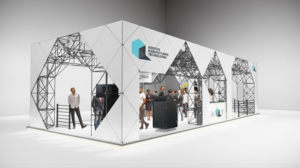 Sheffield-based Additive Manufacturing Technologies (AMT) will also be attending formnext as it officially exits stealth mode. The company will be showcasing a customizable, modular, and sustainable stand construction at the event, with over 6,000 3D printed parts that will connect 1,100 meters of aluminum tubing to create the booth, which was designed and constructed by Steel Roots Design. Materialise printed the parts out of Nylon PA 2200 material, using SLS technology by EOS, and they were then post-processed with AMT’s own PostPro3D platform. The lightweight parts have complex geometries, with moving features and internal threads that would have been impossible to create using another fabrication process.
Sheffield-based Additive Manufacturing Technologies (AMT) will also be attending formnext as it officially exits stealth mode. The company will be showcasing a customizable, modular, and sustainable stand construction at the event, with over 6,000 3D printed parts that will connect 1,100 meters of aluminum tubing to create the booth, which was designed and constructed by Steel Roots Design. Materialise printed the parts out of Nylon PA 2200 material, using SLS technology by EOS, and they were then post-processed with AMT’s own PostPro3D platform. The lightweight parts have complex geometries, with moving features and internal threads that would have been impossible to create using another fabrication process.
“The whole point of exhibiting at a show like Formnext is to demonstrate your technologies and capabilities. At AMT we don’t want to just tell people how good our technologies are, we want to really show them. Our unique stand will show how functional and sustainable 3D printed parts — even at higher volumes — can be utilised when using our automated post processing technologies,” stated AMT’s CEO Joseph Crabtree.
“This level of sustainability commitment is a fundamental principle for AMT at every level of the business. Every decision we make takes sustainability into consideration.”
See AMT’s 120 kg stand structure for yourself at Booth 361, Hall 12.1, at formnext next month. Once it’s been constructed, several other company innovations will be showcased inside, such as the automated Digital Manufacturing System (DMS).
Thor3D and Rhinoceros Sign Partnership Agreement for New Product
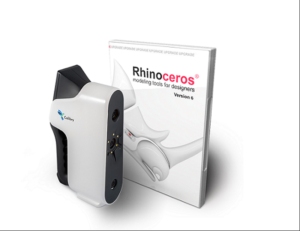 3D scanner manufacturer Thor3D and Rhinoceros software developer McNeel have signed a partnership agreement so that Rhino software can now be resold by Thor3D’s distribution partners, along with multiple plug-ins, in a bundle with the Calibry handheld 3D scanner. Rhino’s set of tools for analysis, animation, engineering, free-form 3D modeling, and engineering can now be supplemented by Calibray scans, which can be used as base models. In addition, the bundle can also be extended using Brazil and Penguin rendering software, the Flamingo nXt rendering engine, and integrated animation by Bongo.
3D scanner manufacturer Thor3D and Rhinoceros software developer McNeel have signed a partnership agreement so that Rhino software can now be resold by Thor3D’s distribution partners, along with multiple plug-ins, in a bundle with the Calibry handheld 3D scanner. Rhino’s set of tools for analysis, animation, engineering, free-form 3D modeling, and engineering can now be supplemented by Calibray scans, which can be used as base models. In addition, the bundle can also be extended using Brazil and Penguin rendering software, the Flamingo nXt rendering engine, and integrated animation by Bongo.
“Rhino software is widely known and used worldwide. Many of our customers already use it and our goal is to make it even more accessible to a wider audience. Engineers and digital artists alike, will find this software, in combination with our 3D scanners, extremely helpful in their day-to-day work,” said Anna Zevelyov, the CEO and Co-Founder of Thor3D.
Recommended retail price for the new Calibry and Rhino bundle will be €5,700.
Discuss these stories and other 3D printing topics at 3DPrintBoard.com or share your thoughts in the comments below.
The post 3D Printing News Briefs: October 10, 2019 appeared first on 3DPrint.com | The Voice of 3D Printing / Additive Manufacturing.
3D Printing Industry News Sliced: AMT, BCN3D Technologies, ParaMatters, Prusa, NASA
TUM Purchases AMT’s PostPro3DMini for Post-Processing 3D Printed Medical Device Parts
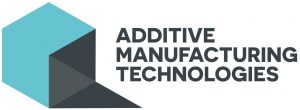 UK-headquartered Additive Manufacturing Technologies (AMT) is a vertically integrated technology development and manufacturing company that creates automated digital solutions to help its customers unlock the potential of industrial 3D printing. In 2017, when the company was founded, it introduced its PostPro3D commercial offering, which automatically smooths elastomeric and nylon 3D printed parts. The patent-pending technology, which was officially released last year, provides an automated and sustainable post-processing solution for high volume, production 3D printed parts, and works on all types of filament- and powder-based 3D printing methods.
UK-headquartered Additive Manufacturing Technologies (AMT) is a vertically integrated technology development and manufacturing company that creates automated digital solutions to help its customers unlock the potential of industrial 3D printing. In 2017, when the company was founded, it introduced its PostPro3D commercial offering, which automatically smooths elastomeric and nylon 3D printed parts. The patent-pending technology, which was officially released last year, provides an automated and sustainable post-processing solution for high volume, production 3D printed parts, and works on all types of filament- and powder-based 3D printing methods.
Now, AMT has announced the first sale of its new PostPro3DMini system, which was introduced to the market earlier this year. The Institute of Micro Technology and Medical Device Technology (MIMED) of the Technical University of Munich (TUM) confirmed that it has purchased one of AMT’s automated PostPro3DMini post-processing systems, which it plans on using to support its ongoing medical device research.
“We are really pleased to be working with the Mechanical Engineering department at TUM. This is a prestigious research institute that has been working on the progression of AM for many years. The fact that they have purchased the PostPro3DMini to support this research, and for such a demanding application in the medical device sector, is a real testament to the capabilities of the PostPro3D platform and how it can meet the demands for such applications that previously have not been met,” stated Joseph Crabtree, the CEO of AMT.
All of AMT’s post-processing systems are both UL- and CE-certified. The PostPro3DMini is based on the company’s proprietary, automated BLAST (Boundary Layer Automated Smoothing Technology) process, and offers all of the original PostPro3D’s advantages in a more compact unit. It’s a great size for design studios, research institutions, STEM programs, and smaller production runs, and is just as safe and sustainable for polymer 3D printed parts.
Speaking of safety and sustainability, AMT holds these as paramount to its philosophy, and so completed tests on EOS PA2200 3D printed parts processed with its PostPro3DMini. The results conform with all necessary cytotoxicity tests, in addition to skin irritation tests to normative references: ISO 10993-10 (2013), ISO 10993-1 (2018), and OECD TG 439.
The new PostPro3DMini system provides excellent smoothing and surface modification, which is able to achieve a surface quality that’s at least equal to injection molding for 3D printed polymer parts, if not even better. Rather than using water, the process uses a single, recyclable, non-toxic agent instead, and AMT’s automated post-processing hardware is well-suited for applications in medical devices.
 The ISO:13485-certified MIMED at TUM has embraced 3D printing as a viable development and production method for its continued research into new medical devices. That’s why the department was on the lookout for a commercially available system for post-processing when it discovered AMT’s PostPro3DMini.
The ISO:13485-certified MIMED at TUM has embraced 3D printing as a viable development and production method for its continued research into new medical devices. That’s why the department was on the lookout for a commercially available system for post-processing when it discovered AMT’s PostPro3DMini.
MIMED is currently developing individualized instruments for different medical applications using EOS PA2200 material; obviously, as this material is what was tested on the PostPro3DMini, the institute sees a lot of potential for the system. The PostPro3DMini will be integrated into MIMED’s 3D printing process for creating medical devices, in order for the institute to increase its range of SLS medical device parts.
Discuss this story and other 3D printing topics at 3DPrintBoard.com or share your thoughts in the Facebook comments below.
[Images: Additive Manufacturing Technologies]
The post TUM Purchases AMT’s PostPro3DMini for Post-Processing 3D Printed Medical Device Parts appeared first on 3DPrint.com | The Voice of 3D Printing / Additive Manufacturing.
What happened in 3D printing at RAPID & TCT 2019?
3D Printing News Briefs: May 16, 2019
We’ve got plenty of business news for you in today’s 3D Printing News Briefs, starting with Additive Manufacturing Technologies’ impressive growth as of late. ExOne has announced a collaboration with Oak Ridge National Laboratory, and DigiFabster has announced several updates to its platform. Moving on to new product launches, Shining3D has a new industrial metrology system, and peel 3d introduced a new affordable 3D scanner.
Additive Manufacturing Technologies Showing Rapid Growth
UK-based Additive Manufacturing Technologies (AMT) was founded in 2017 and is now emerging from semi-stealth mode and into full commercial production with its automated post-processing and finishing solutions for 3D printed parts. The company is showing rapid growth forecasts, and has been opening new US facilities, announcing partnerships, and hiring important personnel to help with its mission of providing the industry with industrial AM post-processing. AMT has made two important strategic additions to its Global Innovation Centre in Sheffield, appointing David Manley as Non-Executive Chairman and hiring Gavin Minton as the Aftersales and Customer Experience Manager.
“These are indeed exciting times at AMT as we aggressively market and sell our PostPro3D post-processing systems for AM parts having moved from the semi-stealth mode we have been operating in for a couple of years. We have been growing rapidly, but now we are moving to the next level — with our technology capabilities, our facilities and our brilliant team. We are really excited to welcome David and Gavin to AMT — they will be fundamental to our continued growth strategy,” said Joseph Crabtree, CEO at AMT.
“The post-processing step has long been the Achilles heel for AM as it moves to being a true mass manufacturing technology, and we are proud to offer our fully automated solution, which is already revolutionising the ways in which manufacturers integrate AM as a mass production tool. AMT is working in partnership with numerous OEMs, vendors and material suppliers to take the pain out of post-processing with an intelligent and collaborative approach, and we are scaling up production globally in order to share the progress we have made with our post-processing solutions. David and Gavin will join our team to provide key support in this mission.”
ExOne Announces Collaboration with Oak Ridge National Laboratory
 The ExOne Company, which manufactures 3D printers and provides 3D printing services to industrial customers, is collaborating with Oak Ridge National Laboratory (ORNL) to continue advancements in binder jet 3D printing technology. Binder jetting is important because it offers lower operating costs, and maintains higher levels of productivity, than many other AM technologies, and ExOne is an industry leader in non-polymer binder jet 3D printing. Its collaboration with ORNL is targeted initially on developing technology for new binder jet systems, leveraging ORNL’s instrumentation and advanced data analysis methodologies, as well as the Department of Energy’s Manufacturing Demonstration Facility (MDF) at ORNL, in order to optimize chemistry and process parameters for its sand and metal systems.
The ExOne Company, which manufactures 3D printers and provides 3D printing services to industrial customers, is collaborating with Oak Ridge National Laboratory (ORNL) to continue advancements in binder jet 3D printing technology. Binder jetting is important because it offers lower operating costs, and maintains higher levels of productivity, than many other AM technologies, and ExOne is an industry leader in non-polymer binder jet 3D printing. Its collaboration with ORNL is targeted initially on developing technology for new binder jet systems, leveraging ORNL’s instrumentation and advanced data analysis methodologies, as well as the Department of Energy’s Manufacturing Demonstration Facility (MDF) at ORNL, in order to optimize chemistry and process parameters for its sand and metal systems.
“By collaborating with a world-class lab like Oak Ridge National Laboratory, we accelerate ExOne’s binder jetting technology capabilities,” said Rick Lucas, ExOne’s Chief Technology Officer. “We believe these collaborative efforts will effectively and efficiently result in the establishment of new materials, binders and process developments, retaining our significant edge over competitors and other technologies in the industrial manufacturing space.”
DigiFabster Announces Platform Updates
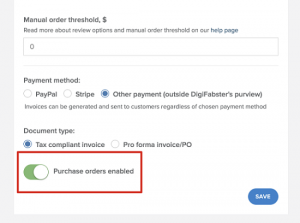 3D printing software and services provider DigiFabster, which uses its software-as-a-service (SaaS) platform to help companies easily automate and streamline certain business processes, announced that it had made several important enhancements to its platform this spring that will benefit many different types of users, including 3D printing service bureaus. The company has many customers who use HP’s Multi Jet Fusion technology, which accepts the 3MF file format, and DigiFabster’s platform now supports 3MF direct uploads through its web-based widget.
3D printing software and services provider DigiFabster, which uses its software-as-a-service (SaaS) platform to help companies easily automate and streamline certain business processes, announced that it had made several important enhancements to its platform this spring that will benefit many different types of users, including 3D printing service bureaus. The company has many customers who use HP’s Multi Jet Fusion technology, which accepts the 3MF file format, and DigiFabster’s platform now supports 3MF direct uploads through its web-based widget.
DigiFabster also enabled a new feature so that customers can accept purchase orders as a form of payment, and modified the code for its Floating button installation so that it can adapt to different screen widths. Another new capability makes it possible for CNC users, like machine shops, to easily change their pricing based on how complex the machine work is, and the DigiFabster system was also updated to automatically check for wall thickness, so that the files customers receive are ready.
SHINING 3D Launched New Metrology Products
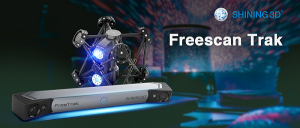 Chinese 3D printing and digitizing company SHINING 3D recently attended the international Control trade fair for quality assurance, and released its latest industrial metrology solution at the event. Three products make up the portable system – the FreeTrak optical scanner, Freescan Trak 3D scanner, and FreeTrak Probe – which work separately and together to offer a comprehensive industrial scale measurement solution.
Chinese 3D printing and digitizing company SHINING 3D recently attended the international Control trade fair for quality assurance, and released its latest industrial metrology solution at the event. Three products make up the portable system – the FreeTrak optical scanner, Freescan Trak 3D scanner, and FreeTrak Probe – which work separately and together to offer a comprehensive industrial scale measurement solution.
The versatile FreeTrak system of the wireless solution can capture the scanner structure’s spatial position in real time, and also allows the user to move the part, or tracker, during measurement without the results being compromised, which makes it perfect for use in unstable environments. The FreeTrak Probe, a portable CMM probing system created for use in industrial environments, is not “susceptible to environmental influences” like position changes and vibration, and can be used to generate highly accurate data even in challenging places. The FreeTrak system is now being integrated into SHINING 3D’s metrology and industrial solution ecosystem.
peel 3d Introduces Affordable 3D Scanner
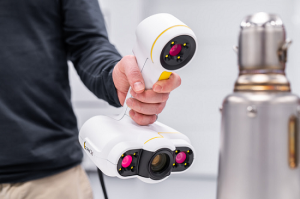 Canadian 3D scanner developer peel 3d is on a mission to provide universal access to affordable, professional-grade 3D scanning technology. Located in Québec, the peel 3d team just launched the peel 2, a brand new variant of its peel 1 scanner that has three cameras instead of just one, for maximum accuracy, resolution, and realism. Powered by Creaform technology like its predecessor, the easy to use peel 2’s integrated color-capture functionality allows users to archive objects in high definition, as well as in their original colors, and monitor the accuracy and progress of the surface coloring. The new peel 2 also features new and improved peel 2.0 software with more functionalities, in addition to a system that uses a scanned object’s texture to improve its ability of positioning itself accurately in space.
Canadian 3D scanner developer peel 3d is on a mission to provide universal access to affordable, professional-grade 3D scanning technology. Located in Québec, the peel 3d team just launched the peel 2, a brand new variant of its peel 1 scanner that has three cameras instead of just one, for maximum accuracy, resolution, and realism. Powered by Creaform technology like its predecessor, the easy to use peel 2’s integrated color-capture functionality allows users to archive objects in high definition, as well as in their original colors, and monitor the accuracy and progress of the surface coloring. The new peel 2 also features new and improved peel 2.0 software with more functionalities, in addition to a system that uses a scanned object’s texture to improve its ability of positioning itself accurately in space.
“peel 2 pushes back all technical boundaries and redefines the concept of affordable 3D scanners,” stated François Leclerc, the head of the peel 3d initiative. “It will appeal as much to artists wishing to switch over to digital as it will to medical professionals wanting to scan the human body or mechanics working with existing components. It is by far the most comprehensive entry-level scanner on the market.”
The peel 2 is available for purchase online from peel 3d and select retailers for $7,490.
Discuss these stories and other 3D printing topics at 3DPrintBoard.com or share your thoughts in the Facebook comments below.

